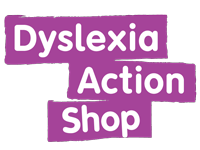This website uses cookies to ensure you get the best experience on our website. About consent.
TOWRE 2 - Test of Word Reading Efficiency, Second Edition - Product Range
Required qualifications
Working in a school or collegeor QTS/QTLS or equivalent
or Psychologist, SaLT or OT
A measure of an individual's ability to pronounce printed words and phonemically regular non-words accurately and fluently.
TOWRE 2 - The Test of Word Reading Efficiency
TOWRE 2 is a quick and reliable way to assess the efficiency of sight word recognition and phonemic decoding in children and adults, providing education professionals, schools and psychologists with a reliable and valid measure of fluency and accuracy of print-based word-reading skills.
Benefits
TOWRE 2 is widely used for three different purposes:
- Early identification. The TOWRE 2 can be used in identifying children in the early years who will require more intensive or explicit instruction in word reading skills in order to make adequate progress in learning to read.
- Diagnosis of reading disabilities. The test is also being widely used as part of a battery of tests for diagnosis of specific reading disabilities in older children and adults. TOWRE 2 can be used either as a replacement for or as a supplement to standard diagnostic tests of context-free word reading ability currently in use.
- Research. Since its publication in 1999, the TOWRE 2 has been widely used in research as a quick and reliable assessment of word-level reading skills in both large and small research populations.
What's new?
- Improved monitoring of progress and evaluating the impact of instructional interventions through the inclusion of additional word lists in subtests; each of them now has a total of four equivalent forms.
- The manual presents extensive information required to evaluate the educational and statistical meaning of changes in performance that may occur from one testing to another.
- Revised manual providing new information about validity and reliability to support diagnostic assessments of children with reading disabilities.
- Data displayed in easy-to-access tabular format to show how each of the subtests of the TOWRE 2 is related to other prominent tests of reading skill.
Complete kit includes:
- Examiner’s Manual
- Form A Word Cards
- Form B Word Cards
- Form C Word Cards
- Form D Word Cards
- 25 Form A Examiner Record Booklets
- 25 Form B Examiner Record Booklets
- 25 Response to Intervention Booklets
- all in a sturdy storage box.
Subtest
The two subtests of the TOWRE 2 have four alternate forms, A through D. Subtests include:
- Sight Word Efficiency (SWE) - assessing the number of real words printed in vertical lists that an individual can accurately identify within 45 seconds.
- Phonemic Decoding Efficiency (PDE) - measuring the number of pronounceable nonwords presented in vertical lists that an individual can accurately decode within 45 seconds.
Description
The Test of Word Reading Efficiency–Second Edition (TOWRE 2) is a measure of an individual’s ability to pronounce printed words (Sight Word Efficiency) and phonemically regular nonwords (Phonemic Decoding Efficiency) accurately and fluently. Because it can be administered very quickly, the test provides an efficient means of monitoring the growth of two kinds of word reading skill that are critical in the development of overall reading ability.
Frequent assessment of critical reading skills is also a central aspect of the popular Response to Intervention model of service delivery. Although the TOWRE 2 has not been developed to provide weekly or monthly assessments, it certainly can be used to monitor progress in growth of word-level reading skills three or four times per year.
Standardisation: US, normed on 1700 individuals (700 primary), 2008-2009
Age Range: 6 to 24 years 11 months
Administration: Individual
Testing Time: 5-1- minutes
Authors: Richard Wagner, Joseph K Torgesen, Carl Rashotte
Publisher: Pro-ed
Publication Date: 2011
Want to qualify to use this test?
Real Group offer a range of courses that will enhance your assessment skills, develop your role within SEN and ultimately enable your students to make effective progress, helping them achieve their goals.
- Take your competence in psychometric testing to the next level with the gold standard qualification for the education profession – Certificate of Competence in Educational Testing – set by the British Psychological Society (BPS).
- Looking to become an Access Arrangements Assessor? Learn how to use psychometric testing instruments effectively (CCET) and apply them in exam access arrangements (AAC) confidently and competently with the Certificate in Psychometric Testing, Assessment and Access Arrangements (CPT3A).


